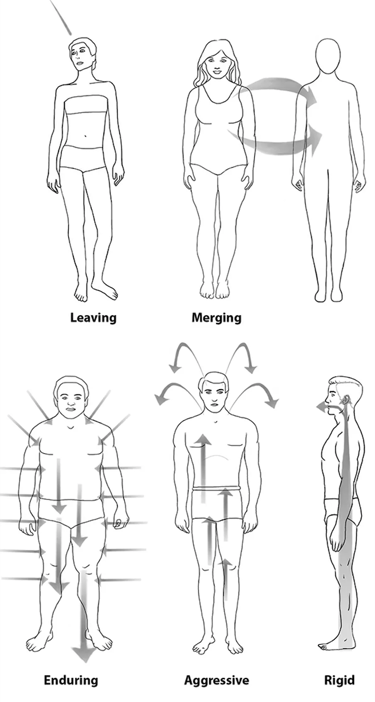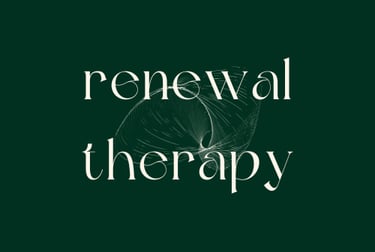The 5 Personality Patterns and the NeuroAffective Relational Model (NARM): A Crossroads in Understanding and Healing
How your survival strategies keep you stuck from experiencing what you want in life.
Rachelle Tersigni
12/26/20243 min read


As a NARM psychotherapist dedicated to supporting individuals on their journey toward healing, I am continually inspired by frameworks that deepen our understanding of human behavior and emotional resilience. Both NeuroAffective Relational Model (NARM) and the content in The 5 Personality Patterns by Steven Kessler explain how our early experiences shape us and how we can move toward greater connection, balance, and well-being.
The 5 Personality Patterns: A Map of Survival Strategies
In The 5 Personality Patterns, Steven Kessler explores how early life experiences lead to the formation of survival strategies, which he organizes into five distinct patterns:
The Leaving Pattern: A tendency to dissociate or withdraw in response to overwhelming situations.
The Merging Pattern: A strong need for connection and validation, often leading to self-sacrifice.
The Enduring Pattern: A capacity to tolerate difficulty but at the cost of suppressing emotions.
The Aggressive Pattern: A drive to assert power and control, often masking vulnerability.
The Rigid Pattern: A focus on perfection and order to avoid emotional chaos.
These patterns emerge as adaptive responses to early stressors and serve as protective mechanisms. Over time, however, they can limit our capacity for authentic connection and self-expression. Kessler’s work encourages us to recognize these patterns with compassion and to gently work toward greater presence and choice.
NARM: Healing at the Intersection of Connection and Autonomy
The NeuroAffective Relational Model (NARM), developed by Dr. Laurence Heller, the same survival strategies are given different names which are central to five core needs: connection, attunement, trust, autonomy, and love-sexuality. NARM focuses on addressing the impact of developmental trauma and explores how our ability to connect—both with ourselves and others—is shaped by early relational experiences.
When core needs are unmet in early life, we develop compensatory strategies that can become ingrained patterns. Much like Kessler’s personality patterns, these strategies are not inherently pathological but represent adaptations to relational and environmental challenges.
NARM emphasizes the importance of integrating both top-down (cognitive) and bottom-up (somatic) approaches in therapy. By bringing mindful awareness to the present moment and addressing the implicit memories held in the body, NARM facilitates a process of releasing old patterns and reconnecting with our core sense of self.
Points of Intersection: Patterns and Core Needs
When we examine The 5 Personality Patterns through the lens of NARM, intriguing parallels emerge:
Connection (NARM) and The Leaving Pattern: Both models highlight how early disruptions in connection can lead to a withdrawal from the body and relationships. In therapy, the intention is to bring someone with a connection survival style back into a safe connection to self.
Attunement (NARM) and The Merging Pattern: The need for attunement corresponds to the Merging Pattern’s search for external validation and the challenge of listening to one own needs and feelings. Healing involves cultivating self-attunement and reclaiming a sense of inner fulfillment.
Autonomy (NARM) and The Enduring Pattern: Challenges to autonomy often lead to pressure, holding back, and pleasing at the expense of oneself. Supporting healthy boundaries and self-regulation can transform this pattern into empowered action.
Trust (NARM) and The Aggressive Pattern: A lack of trust in others or the environment can result in the use of control to keep oneself safe and a denial of one's vulnerability. Therapy focuses on fostering an increased capacity to trust.
Love-Sexuality (NARM) and The Rigid Pattern: The Rigid Pattern’s perfectionism often masks a disconnection from authentic love and joy. Integrating vulnerability and spontaneity allows for more genuine relationships.
Bringing the Models Together in Practice
Both The 5 Personality Patterns and NARM invite us to approach healing with curiosity, compassion, and a commitment to uncovering the deeper truths of our being. By understanding the interplay between survival patterns and core needs, we can create a roadmap for therapy that honours the uniqueness of each individual while addressing the common threads of human experience.
In my work, I find that these models complement each other beautifully. The 5 Personality Patterns provides a framework for identifying and naming the strategies that have shaped a person’s life. NARM offers tools to explore these patterns in the here-and-now, fostering a deeper connection to self and others. Together, they create a powerful synergy for transformation.
Moving Toward Healing and Integration
At its core, both Kessler’s and NARM’s work remind us that our patterns are not fixed destinies but adaptive responses that can evolve. Healing comes not from erasing these patterns but from increasing your capacity to live with greater choice, connection, and authenticity.
If you’re curious about how these frameworks can support your journey, feel free to explore more resources on my website, Renewal Therapy, or reach out to schedule a consultation. Together, we can uncover the pathways to greater freedom and fulfillment.
Intentional therapy from the comfort of your own home.
Virtual sessions in the Greater Toronto Area and across Ontario, and Quebec Canada
Telephone: 289-277-6638


Renewal: to make like new : restore one's experience to the freshness of the present, to bring vigor, to replace something old.
Instead of operating from old, outdated psychobiological and neural pathways, slowly over time, we learn to create current, updated pathways that support us to experience what we want for ourselves in life.
